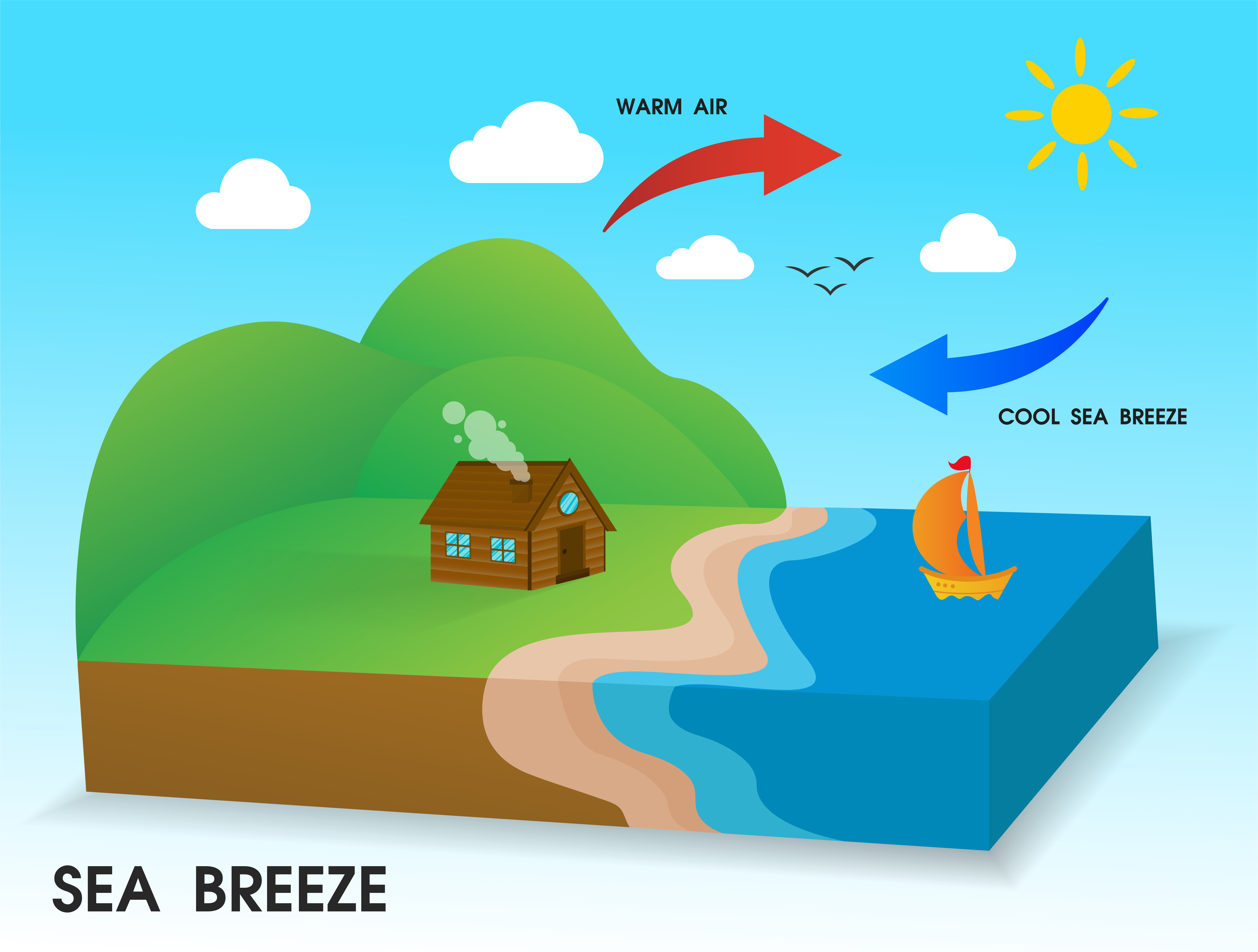
Coastal mountains and hills block some of the tidal force, which results in lower than average tides in those areas. When the moon is on the opposite side of Earth from the sun, its gravity pulls less hard on the water. When the moon is between the Earth and the sun, its gravity pulls harder on the water closest to it. The ocean’s tides are caused by the gravitational pull of the moon and sun. If you can do that, you’ll be able to make more accurate predictions about which way the wind will blow. Periodic winds are winds that flow at regular intervals and are originated due to the local differences in temperature and pressure.


The key is to pay attention to both the land and water temperatures, as well as the time of day. How Temperature Affects Wind Direction?Īs you can see, temperature plays a big role in determining the direction of the wind. The air above the water rises and is replaced by cooler air from over the land. This causes a pressure difference in the opposite direction. The land cools off faster than the water. This wind is called a sea breeze.Īt night, the situation is reversed. The air above the land rises and is replaced by cooler air from over the water. This causes a pressure difference between the two surfaces. The ground heats up quicker than the sea during the day. The fundamental cause of sea and land winds is the temperature differencesl.

Most people attribute this to the “sea breeze” and the “land breeze.” But do you know what causes these breezes? And why are they different? In this blog post, we will explore the answer to these questions, and more! So keep reading to learn more about land and sea breezes! What Is Sea Breeze?ĭuring the day, when the sun warms the land quicker than the ocean, a sea wind is formed. This technical study is designed to generate discussion on this highly dynamic issue.Many students know that there is a difference in the air temperature near the ocean and the air temperature inland. The authors of this study outline measures for coordinating the numerous actors, explore the intricacies of shared connection and hybrid schemes, and underscore the associated legal and market issues. The most efficient and cost-effective approach involves a fully integrated, transnational mechanism with the capacity needed to deliver the energy to Europe’s demand centres. Without a comprehensive, regional approach, meeting the Green Deal targets will cost consumers dearly. In addition to issues of finance and permitting, t hey will need to develop the necessary onshore and offshore grid connections, as well as implement the changes to electricity market design that these necessitate. P olicymakers will need to figure out the ‘ recipe ’ for integrating offshore wind. Y ou don’t bake it in slices, y ou bake it in one whole pie. The challenges of h arvesting and bringing wind power ashore in these quantities cannot be solved with piecemeal policies. T he European Commission envisions offshore wind will meet 25% of electricity demand by 2050 - an increase to 450 GW or a 20-fold increase over today’s levels.Īlthough 450 GW is only one-third of Europe ’ s estimated potential for offshore wind, this is still a n overwhelming task. Electrification from renewable energy resource s will play an important role in these decarboni s ation efforts. The European Union aims to halve greenhouse gas emissions in the next ten years and attain net zero by 2050. Given the urgency of the transition to clean energy, Europe has set its sights high.


 0 kommentar(er)
0 kommentar(er)
